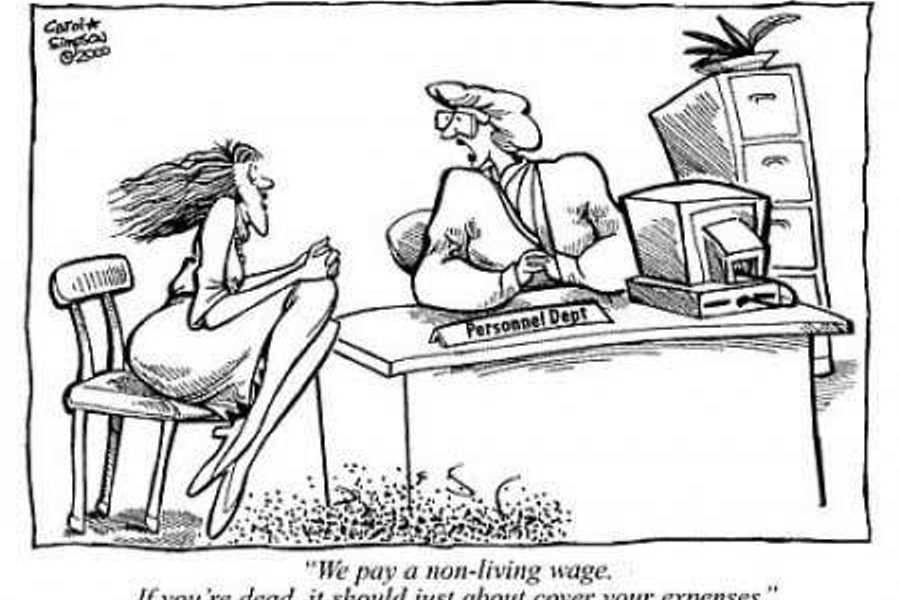
Browsing the news headlines, you might get the impression that women aren’t doing as badly in this economy as men. Technically, they have a lower unemployment rate, reports the Wall Street Journal, and have seen a larger growth in median wages. But the numbers don’t tell the whole story of the recession’s ugly toll on the fairer sex.
A gendered perspective on the recession reveals that some women — namely those who were poor and disempowered to begin with — have fallen further behind as workers, mothers, and community members. The Center for American Progress reports that unmarried women have been hit from all sides by job loss, the foreclosure epidemic, and the health care crisis.
Unmarried women are more exposed to the volatility of the labor market. They generally have higher workforce participation rates (this includes women who are never-married, divorced and separated). They also tend to have lower education levels, and often come from poor communities of color. In other words, they’re a vital part of the economy, but are overlooked and underrepresented when it comes to economic equity.
According to the Center’s report:
Although unmarried women represent less than half (46.5 percent) of all women workers, they account for 6 in 10 (60.8 percent) of women workers who are unemployed. The situation is worse for unmarried women who head families, most of whom are single mothers, who now have an unemployment rate of 12.6 percent, 2.4 percentage points above the national average….
Between October 2008 and October 2009, the increase in the unemployment rate of unmarried women (3.6 percentage points) was more than twice the increase of their married counterparts (1.7 percentage points).
As the jobless rate climbs, many single women have seen their progress toward the dream of homeownership suddenly clawed back by the subprime mortgage meltdown.
The Applied Research Center points out that the burden on single mothers of color is growing heavier by the day:
Almost 44% of single-mother-headed Black families with children under 18 and 46.6% of single-mother-headed Latino families with children under 18 were living in poverty, compared to 29.2 % of similar white families. The disparity results from relegating people of color, especially women, to low-paying jobs… it also reflects the inadequacy of income support programs for very poor families.
And it’s no wonder that the media gloss over these factors, since unmarried women and single moms are tied to demographics that are routinely shut out of the political arena:
[In] October 15.0 percent of African-American unmarried women were unemployed, as were 11.1 percent of unmarried Hispanic women, both far above the national average unemployment rate, compared to 9.2 percent of white unmarried women… Since African-American women are more likely than white women to be unmarried, this pushes the overall unemployment rate for unmarried women upward.
Meanwhile, the Recovery Act doesn’t fully address these hardships. Though Congress has boosted some safety net programs, like food stamps, some of the poorest women remain tethered to welfare-to-work policies that pull them into marginal jobs, without moving them toward real self-sufficiency.
According to the Center on Budget and Policy Priorities, state-run welfare programs have not kept pace with the growing needs of the poor. In 27 of the 45 states surveyed, programs that provide Temporary Assistance for Needy Families “either have not been responsive at all to the economic downturn or have been only minimally responsive.” Just 40 percent of eligible families actually get the cash aid they’re entitled to, perhaps due to stigma or misinformation.
Those who do receive benefits may find them abruptly cut off if they fail to jump through bureaucratic hoops — a trend that appears to polarize along racial lines.
A recent move to extend federal unemployment benefits may help, the current unemployment insurance system is generally a weak buffer against long-term joblessness. Lower-income people receive less assistance or none at all — particularly if they’re stuck in part-time jobs, or marginalized by employer discrimination or immigration status.
The erosion of employer-based health coverage has further destabilized households headed by unmarried women. They’re far less likely than married women to have employer-based insurance. Not to mention, insurers have historically found remarkably creative ways to undermine women’s healthcare — such as writing off domestic violence as a preexisting condition.
The much-hyped healthcare reform plan just passed by the House purports to address some of these inequities, but on balance, advocates say lawmakers are making poor women pay the social cost of a spineless reform agenda. In addition to propping up a fundamentally unjust private insurance industry, the bill drastically tightens restrictions on coverage for abortion services.
Limiting abortion access deals a double-blow to independent unmarried women; the freedom to control their reproductive future is critical as they navigate a job market rife with gender discrimination and threadbare benefits for working mothers.
Though the latest economic reports suggest gender disparities that are tilted against men, the data shed little light on how women are really faring in the recession. After all, those who are struggling the hardest to survive have, by definition, always been invisible.
Michelle Chen is a contributing writer at In These Times and The Nation, a contributing editor at Dissent and a co-producer of the “Belabored” podcast. She studies history at the CUNY Graduate Center. She tweets at @meeshellchen.








